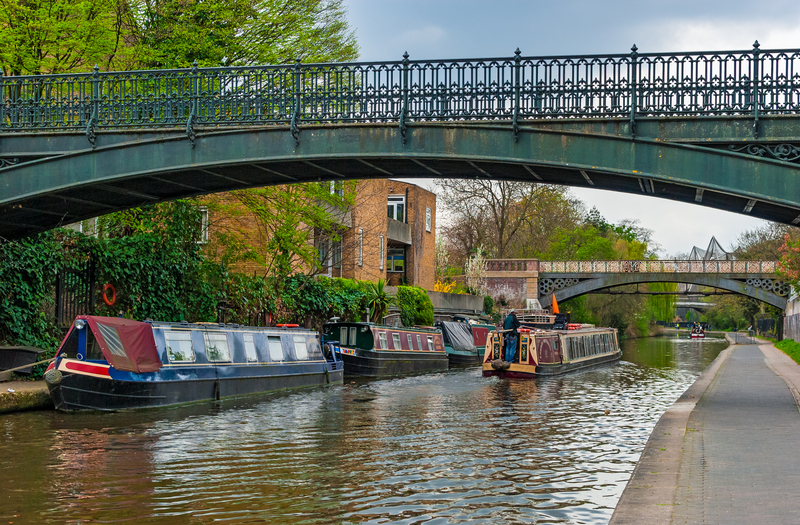Professional Advice for Stress-Free Piano Moving
Posted on 03/06/2025
Professional Advice for Stress-Free Piano Moving
Are you preparing to relocate your beloved piano? Whether you own an upright, a grand, or a baby grand, moving such a delicate and heavy instrument requires careful planning and precise execution. This comprehensive guide reveals tried-and-true professional advice for stress-free piano moving, featuring expert tips, step-by-step instructions, and essential considerations--so your piano's journey is as harmonious as its music.

Why Piano Moving Is a Unique Challenge
Pianos are not just ordinary pieces of furniture--they are finely tuned instruments, often cherished for both sentimental and monetary value. Moving a piano involves dealing with substantial weight, awkward shapes, and fragile internal mechanisms. Even a minor mishap can cause costly damage, both structurally and acoustically. To ensure a stress-free piano move, it's critical to approach the task armed with knowledge and the right strategies.
Key Challenges in Piano Moving
- Weight and Size: Upright pianos typically weigh between 300-500 pounds, while grand pianos can exceed 1,200 pounds.
- Delicate Construction: The internal parts, keys, and strings are highly sensitive to shifting and impact.
- Awkward Shape: Pianos are often top-heavy or have protruding parts, making them difficult to maneuver.
- Risk of Damage: Scratches, dents, and even irreparable harm to the soundboard or legs can occur with improper handling.
Should You Move a Piano Yourself or Hire Professionals?
Deciding whether to move a piano yourself or trust the experts is the first critical step for a smooth, stress-free piano moving experience. While DIY moves are tempting to save cost, they come with significant risks:
- Potential injury to yourself or helpers due to improper lifting techniques.
- Damage to the piano from inadequate protection or mishandling.
- Complications when navigating stairs, narrow hallways, or doorways.
- Voiding insurance or causing loss of value if damage occurs during transit.
Professional piano movers possess the equipment, expertise, and insurance coverage to ensure your piano's safety throughout the process. For most people, especially those with valuable or irreplacable pianos, professionals are the stress-free choice.
Signs You Should Hire a Piano Moving Specialist
- Your piano is particularly valuable, antique, or a grand piano.
- The move involves flights of stairs or tight spaces.
- You lack the manpower, equipment, or experience for the job.
- You want full insurance coverage and peace of mind.
How to Prepare Your Piano for a Move
Even with professional help, preparation is crucial. Here are expert steps for preparing your piano for a stress-free move:
1. Measure Everything
- Measure your piano's exact dimensions: height, width, depth, and, for grand pianos, the length.
- Measure all doorways, hallways, staircases, and elevators along the route to ensure clearance.
2. Clear the Path
- Remove rugs, furniture, and decorations from the moving route.
- Secure pets in a separate area to avoid accidents.
- Ensure all helpers understand the moving plan.
3. Secure Piano Parts
- Lock or secure the lid and keyboard cover to protect the internal keys.
- Remove and pack any detachable parts, such as music stands or legs (for grand pianos), separately.
4. Protect the Piano's Finish
- Wrap the piano completely in thick, soft moving blankets or specialized pads to prevent scratches.
- Secure the blankets with heavy-duty tape, making sure not to tape directly onto the finish.
Essential Equipment for Safe Piano Moving
The right equipment is fundamental to a seamless and stress-free piano move. Professional piano movers always deploy specialized tools, including:
- Piano Dollies and Skids: Designed to distribute weight evenly and allow maneuverability.
- Moving Straps and Harnesses: Provide leverage and secure grip to prevent slipping.
- Heavy-Duty Blankets: Protect the instrument from impacts and scratches.
- Padded Ramps: Help transition the piano safely over stairs or into moving trucks.
- Work Gloves: Enhance grip and protect hands.
- Wooden Planks: Used to create a smooth, flat surface when crossing thresholds or stairs.
Step-by-Step: How Professionals Move Pianos
Want an inside look at how expert movers achieve stress-free piano relocation? Here's a breakdown of their methods--inspired by years of experience:
1. Inspect and Plan
Professionals begin by inspecting both the piano and moving environment, assessing obstacles, and devising a moving plan. This process often includes a walkthrough with the client.
2. Disassembly, If Necessary
For grand and baby grand pianos, movers often detach the legs, pedals, and lyres. These are wrapped and labeled for easy reassembly.
3. Wrapping and Padding
The entire piano is carefully wrapped with padded blankets, focusing extra attention on corners, legs, and the pedal assembly. Secure wrapping is critical for damage-free piano moving.
4. Lifting with Technique
Using proper body mechanics, movers lift the instrument with several helpers. For uprights, the piano is often tilted back onto a dolly; for grands, it is placed on a specialized "piano board" before rolling.
5. Navigating Obstacles
Movers use ramps and planks as needed to traverse stairs or rough surfaces, and they communicate clearly throughout to coordinate maneuvers. Precise, slow movements ensure complete safety.
6. Loading into the Truck
Once at the truck, the piano is secured in place--upright or grand--with straps and cushioning to prevent shifting during transit. Professionals always transport pianos in a climate-controlled environment to avoid humidity-related problems.
7. Unloading and Reassembly
Upon reaching the destination, the process is reversed. Reassembly, fine adjustment, and inspection conclude the journey. Professionals may recommend allowing the piano to acclimate to its new environment before tuning.
After the Move: Ensuring Your Piano's Health
Your stress-free piano move doesn't end when the instrument is in place. There are important follow-up steps to ensure continued performance and preservation:
- Let it Rest: Give your piano a few days to acclimate to its new environment before tuning or heavy use.
- Inspect: Check for any new scratches, loose parts, or changes in sound quality.
- Schedule Tuning: The process of moving can cause slight detuning, even with extreme care. Arrange for professional piano tuning within 1-2 weeks after the move.
- Maintain Proper Environment: Place the piano away from direct sunlight, air vents, or sources of heat/cold to protect its finish and internal components.
Top Tips for a Completely Stress-Free Piano Move
1. Plan Well in Advance
Contact your preferred piano moving specialists several weeks prior to your intended move date. Book during off-peak times for more scheduling flexibility and possibly better pricing.
2. Review Insurance Coverage
Comprehensive insurance is a must. Confirm details with your movers and verify what is covered by your homeowner's policy, if relevant.
3. Communicate Clearly
Provide movers with accurate information about your instrument, the dimensions of your space, and any specific concerns. Clear communication is the key to successful, stress-free piano moving.
4. Document the Move
Take photos of your piano's condition before and after the move. Keep an inventory of separate parts or accessories.
5. Trust the Experts
Ultimately, the easiest way to ensure a worry-free experience is to let professionals handle every aspect of your piano move--from packing to placement.
Cost of Professional Piano Moving--What to Expect?
The cost of piano moving typically depends on the type and size of piano, distance, complexity of the move (stairs, doorways), and whether additional services like disassembly are required.
- Local moves: Typically range from $150 to $500 for upright pianos, and $300 to $1,000 for grand pianos.
- Long-distance moves: Can range from $700 to over $3,000, depending on specifics.
- Extra charges: May apply for obstacles, difficult access, or timing.
While it's tempting to cut corners, remember: the cost of repairing a damaged piano can far outweigh the price of doing it right the first time.

Frequently Asked Questions about Piano Moving
- Can regular movers handle my piano?
Some do, but it's highly recommended to choose piano moving professionals who have specialized training and equipment. - How soon should the piano be tuned after moving?
Wait at least a week for the piano to acclimate to its new location before having it tuned. - Can I move a piano upstairs or downstairs?
Yes, but only with proper planning and equipment. Stairs greatly increase risk--always hire specialists for multi-level moves. - How do I prevent humidity damage during a move?
Use a climate-controlled moving truck and avoid exposing the piano to rapid temperature or humidity changes. - Do I need to dismantle my piano?
Only in specific cases, such as grand or baby grand models that must fit through narrow spaces. Uprights can typically be moved without disassembly.
Conclusion: Let the Music Move You, Not the Stress
With the right preparation and the support of seasoned piano moving experts, relocating your piano can be a seamless experience--free from worry and risk. Remember: Your piano is an investment in harmony and artistry. It deserves to be moved with care, respect, and professionalism.
For the most reliable, efficient, and truly stress-free piano moving, always consult with accredited and experienced specialists. Your instrument's safe journey ensures many more years of beautiful music in its new home.
Let the music move you--not the stress. Trust professional expertise for every note of the journey!










